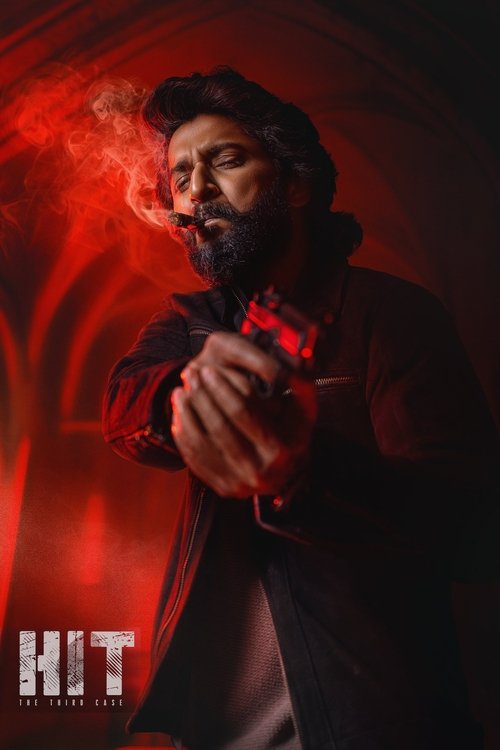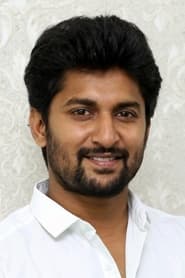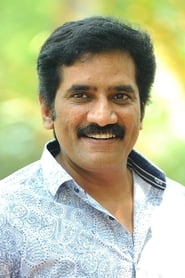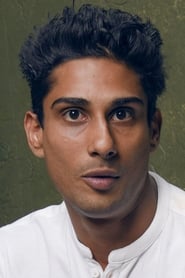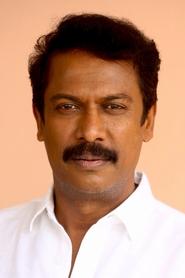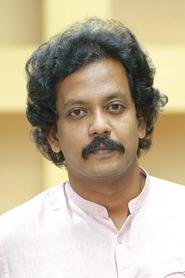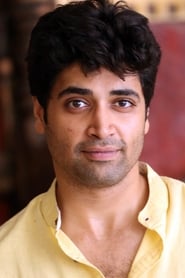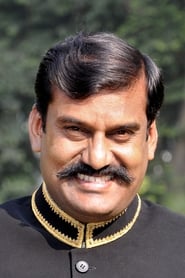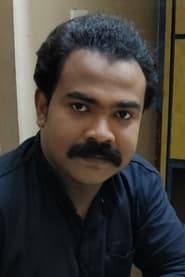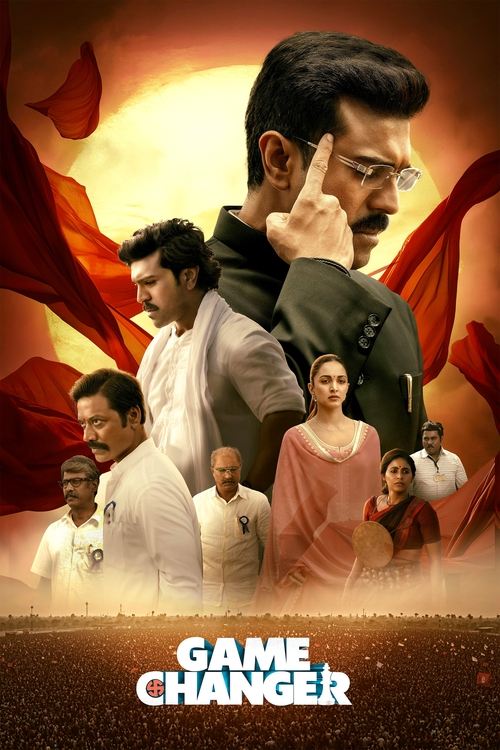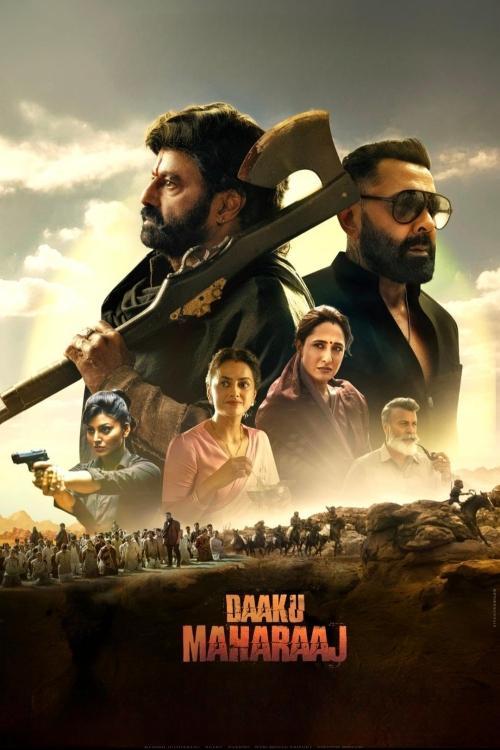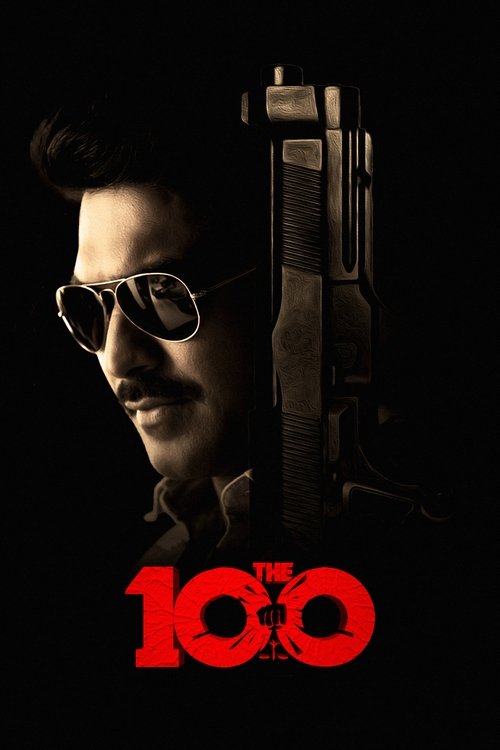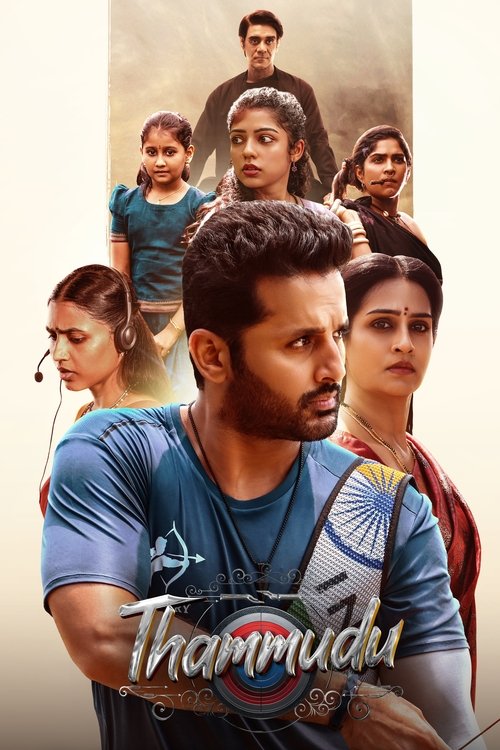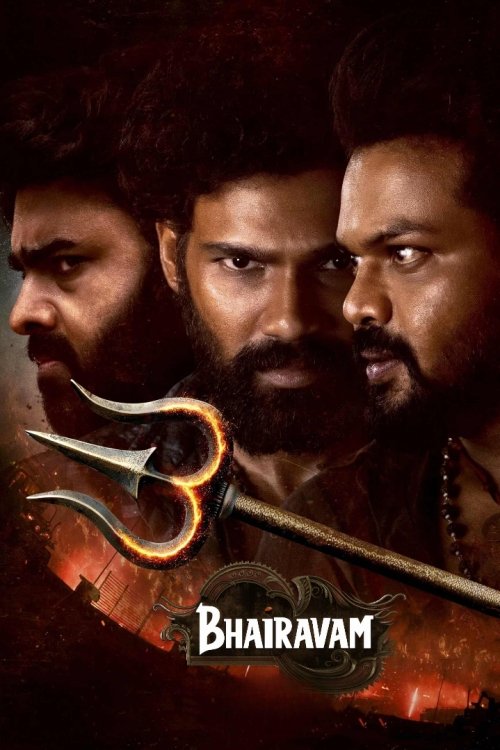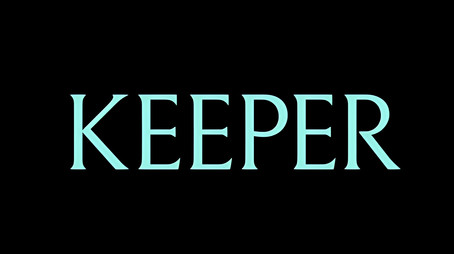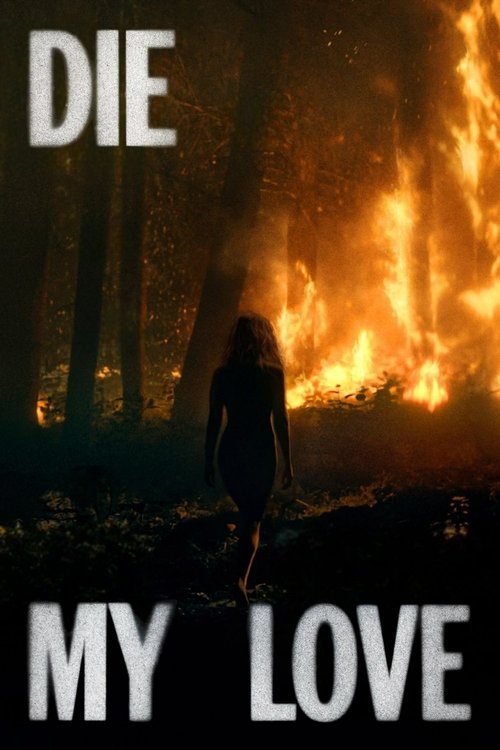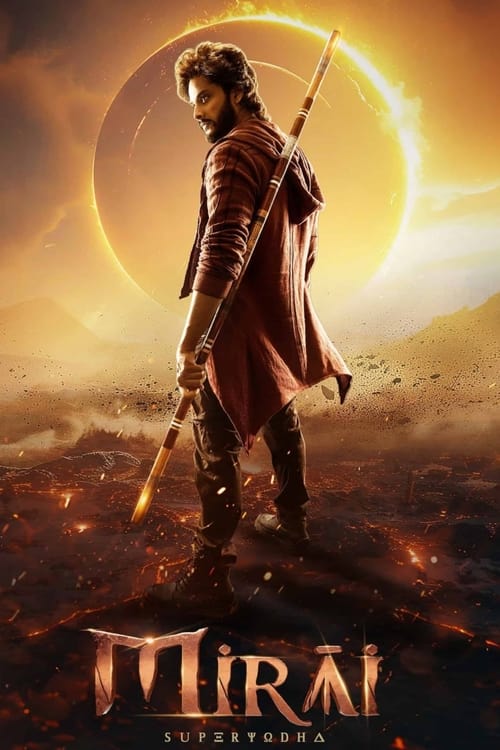
Ask Your Own Question
What is the plot?
A battered cell door clanks open and a gaunt SP Arjun Sarkaar sits on the bunk, his face a blank ledger of past transgressions. He is in prison when a fellow inmate, Samuel Joseph, steps between him and a group of convicts seeking blood -- men who recognize Arjun as the officer who put them away. Samuel physically shields Arjun from harm, dispersing the attackers, and in that act of unexpected protection Arjun begins to recount the chain of events that brought him here. He speaks in long, deliberate flashbacks, narrating how the case that defines him began after he is posted to the HIT team in Visakhapatnam following the events that close HIT: The Second Case.
On arrival in Visakhapatnam, Arjun takes over the role vacated by Krishnadev "KD." Very soon he executes a violent, premeditated killing in a forest: he drags a man -- later identified as a pedophile -- suspends him upside down from a tree, and slits the man's jugular while recording the act. Arjun preserves the footage himself. When police process the scene after his action, they find that organs have been removed from the corpse subsequent to the murder, a macabre clue that confounds investigators. The file lands before the HIT team as an open homicide, and Arjun, now part of that squad, is paradoxically assigned to investigate the very slaying he carried out.
Away from work Arjun's life shifts in a quieter register. His father arranges a matrimonial profile for him and through that portal he meets Mrudula. Their relationship deepens into an affectionate bond; she becomes his companion and confidante. At the same time ASP Varsha, Arjun's subordinate and a sharp-minded officer, begins to suspect discrepancies in his behavior. She tails him, keeping a professional distance that hardens into alarm when she observes Arjun commit a second lethal act in the same brutal fashion: another man is hung upside down in the open, his throat sliced, the deed filmed. Varsha attempts to confront Arjun. The confrontation escalates; she sets an ambush but he overpowers her, binds her to a chair and forces an explanation. In restrained, jagged sentences he justifies his actions: both murdered men are pedophiles. He tells Varsha that his killings aim at that specific criminal element, presenting himself as executioner rather than random murderer.
Arjun's narration pushes backward to his posting in Jammu and Kashmir, where he first encounters murders with the same hallmarks. There he tracks down a killer and after a violent exchange with the suspect's accomplices he arrests the primary perpetrator. Soon after, Arjun learns an eerier fact: a murder of identical cruelty occurs in Bihar and that culprit, too, carries ties to the same dark thread. Following interrogations and evidence review, Arjun uncovers a pattern and a name -- CTK, shorthand for Capture, Torture, Kill -- a clandestine web-based cult that requires recruits to record two ritualized murders as initiation. CTK members post videos, recruit, escalate. The first killer detained in Jammu suicides in custody; two of his accomplices, active in Kashmir, die under circumstances tied to the investigation. The trail grows dangerous and political; Arjun is transferred to Visakhapatnam.
Convinced that infiltration is the only way to dismantle CTK from within, Arjun adopts an extreme plan. He deliberately commits murders that conform to CTK's mode, uploads the recordings to win acceptance, and thereby secures a path into the organization. During this campaign he tracks a CTK-affiliated killer to Jaipur. In a tense night-time sequence Arjun reaches a crime scene where a child faces imminent danger; he intervenes, nearly preventing another murder, and arrests the suspect after a fierce struggle in which the attacker stabs Arjun. He survives the wound and, as he regains strength, the CTK appears to embrace him: its leader, known to members and outsiders alike only as Alpha, personally welcomes Arjun into the circle. Alpha's approval signals that Arjun has crossed into the heart of the cult.
Alpha informs Arjun that CTK convenes annually and that the next meeting will be in Naharlagun, Arunachal Pradesh. Backed by ADGP Nageswara Rao, who authorizes an undercover operation, Arjun assembles a team to infiltrate the meeting and dismantle CTK. He draws in Varsha, whose suspicion has hardened into professional resolve, and other HIT officers, as well as supporting personnel. Mrudula joins the team as well, but only later does Arjun learn she is not merely a romantic partner but a planted operative; she reports to Rao and had been assigned to monitor Arjun's undercover role. The revelation stabs at their personal trust. Mrudula explains to Arjun that she hid her identity because he forbids relationships with colleagues and because her own reasons for joining the force are personal: four years earlier she had punished eve teasers who harassed her sister, and that incident drove her into the police. Arjun, wounded by the concealment, hears her account and reconciles; their bond refocuses on the mission.
In Naharlagun Arjun splits off from his team and gives precise orders for them to track his movements to CTK's secret location. Alpha anticipates interference and deploys decoys; his men lead Arjun's backup and local police astray with false leads that scatter them among multiple sites. Amid the confusion Alpha's forces capture SI Diwakar, one of Arjun's team members; Diwakar's fate becomes immediately perilous as CTK consolidates hostages. The cult's hideout reveals itself to be an old Burmese palace, a derelict compound repurposed into a place of ritualized cruelty. Arjun enters the palace and witnesses staged brutality: hostages are terrorized, tortured and killed in front of recruits; a young woman among the prisoners is murdered on the premises in a cold, methodical execution. The palace's inner rooms host depraved ceremonies in which new recruits are coerced to participate; Arjun is forced to fight against four other new members in a bloodied contest designed to prove loyalty. He survives the combat and, under constant suspicion from Alpha and his lieutenants, works to maintain cover.
While incarcerated within the CTK compound Arjun finds a way to communicate with his team. He tags his pet vulture with a small radio transmitter and uses its flight to send his location; the transmitter's signal provides a narrow, crucial breadcrumb trail for his colleagues. As Alpha grows suspicious of a mole, the intensity in the palace rises. At one point Alpha orchestrates a staged killing to unmask traitors; amid the staged violence a nine-month-old child faces immediate peril. Arjun acts without hesitation: he lunges through a crowd of CTK members, intercepts an attacker about to harm the infant and physically removes the child from danger. He wrests the baby free and in doing so exposes himself to Alpha's wrath.
Arjun then attempts to free the remaining hostages. His movements, signaled by the transmitter-laden vulture, draw the attention of the HIT team and of backup units, including a contingent from the Hyderabad HIT team. The palace erupts into a firefight. Arjun engages CTK members directly: he uses improvised tactics and small-arms exchanges, he moves through ruined corridors while coordinating the approach of his colleagues via bursts from his radio, and he takes down multiple cult members in hand-to-hand and armed confrontations. The team breaches inner chambers; bullets ricochet through carved doorways and the old palace turns into a battleground. In the final sequence inside the palace compound, Arjun confronts Alpha. The two men fight at close quarters; Arjun overpowers and kills Alpha in the melee, ending the leader's immediate command. With Alpha's death other CTK members fall in the crossfire or are captured, and the organization's armed wing disintegrates under the combined assault of Arjun's team and the Hyderabad backup.
The investigative work that follows the raid uncovers an industrial-scale horror. Forensic and testimonial evidence reveals that CTK's ritualized killings serve an ancillary purpose: cult members harvest hormonal glands from terrified victims whose fear physiology produces a yield the traffickers prize. The extracted glands are sent abroad to a Swedish pharmaceutical company, which synthesizes a concentrated hormone-based product marketed as a potent sexual performance enhancer akin to Viagra used by wealthy clients. This organ-trafficking conduit links CTK's barbaric initiation rites to a global supply chain of illicit pharmaceuticals.
As police trace the financial and administrative trail of CTK they unmask the figure who financed and orchestrated the group from the shadows: Samuel Joseph, the man who had shielded Arjun in the jail at the film's opening. Joseph fronts his operation through an NGO named Keen to Care (KTC). The NGO's outwardly benign charitable acts mask its true purpose as a cover for organ trafficking and cult patronage. Arjun reveals that his imprisonment was part of a deliberate, premeditated plan: he had arranged to be jailed in order to gain access to Joseph and to dispatch him personally. In the penultimate sequence Arjun enters the jail with a specific objective; he confronts Samuel Joseph inside the prison and kills him. The film shows Arjun completing Joseph's death; the scene closes on Joseph's body, and Arjun's narration returns to the present, confirming that he accomplished the act he had planned when he allowed himself to be arrested. The screenplay presents this killing as the outside closure to a conspiracy that had stalked multiple states.
Not every life caught in the operation survives. Among the dead is a young officer who had volunteered for a perilous undercover role: ACP Dhanya Mohan IPS, an officer who infiltrates CTK by permitting herself to be taken captive. During the palace raid Dhanya sacrifices her life to save a child, allowing herself to be killed in the cult's inner sanctum so that the infant can live. The film shows her being executed amid the cult's ritualized violence; her death is visceral and direct. After the operation concludes, Arjun honors Dhanya's bravery by officially naming her as the investigating officer on the case posthumously, a gesture intended to acknowledge her ultimate sacrifice and to place her at the center of the case's official record.
Other CTK members die in the course of the raid and subsequent confrontations. Alpha's brother, who earlier had been identified as the perpetrator Arjun arrested in Jaipur, dies along with other senior lieutenants during the firefight inside the Burmese palace. CTK foot soldiers and recruiters are either killed in engagements with Arjun's team and Hyderabad backup units or detained at the scene when they surrender. SI Diwakar, who is captured during Alpha's initial ruse, is rescued when the team breaches the palace; the film shows him alive at the conclusion of the assault. Arjun's violent interventions in the field also leave a trail: the pedophiles he executed in the forest and elsewhere die by his hand, each carried out by hanging the victim upside down and slitting the throat, and those bodies later show missing organs that tie into the CTK trafficking ring.
In the operation's aftermath investigators and prosecutors begin to unravel the layers linking CTK to the international buyers of the harvested glands. They seize documents, bank records, and correspondences tying Keen to Care to labs in Sweden; they arrest intermediaries and secure evidence sufficient to reveal the flow of cash that had bankrolled CTK's activities. With the cult's leadership removed and Samuel Joseph dead, the domestic cell structure loses its cohesion; arrests and prosecutions follow.
The film's closing scenes return to the prison cell where Arjun began his narration. He sits across from Samuel Joseph's now-empty bunk and reiterates the choices he made in pursuit of his version of justice. His voice is steady as credits begin to roll. The narrative then introduces a short mid-credits epilogue set in Tamil Nadu: a new police officer, ACP Veerappan IPS, manning a checkpoint, inspects a truck and discovers a body hidden within its cargo. The find suggests that while CTK and Joseph's network have been dismantled, the trade in trafficked organs and bodies persists elsewhere, gesturing toward a continued cycle of crime and the possibility of another case for the HIT team to pursue. The film ends on that note, with Arjun's confession and the new officer's discovery providing bookends to a story of infiltration, violence and the closing of one criminal chapter while intimating further investigations to come.
What is the ending?
At the end of HIT: The Third Case (2025), Arjun Sarkaar infiltrates the CTK cult's hideout, rescues hostages, and kills the cult members, including the psychopathic leader Alpha. He avenges the death of an undercover female officer who sacrificed herself to save a baby. Arjun also kills Samuel Joseph, the mastermind behind the organ trafficking racket, by getting himself imprisoned and slitting Joseph's throat. The film closes with a cameo of SP Krishna Dev (KD) arriving to support Arjun, setting up the next installment.
The ending unfolds in a tense, detailed sequence:
Arjun Sarkaar, the protagonist and police officer, enters the cult's secret meeting place--an old Burmese palace in Arunachal Pradesh--posing as a member of the CTK cult, which stands for Capture, Torture, Kill. The cult is led by a sadistic figure known as Alpha, who forces initiates to commit brutal murders and runs a dark web operation showcasing their crimes. The cult is also involved in an organ trafficking scheme linked to a powerful pharmaceutical company.
Inside the palace, Arjun discovers hostages being tortured, including a woman who sacrifices herself to save a nine-month-old baby. This woman is revealed to be ACP Dhanya Mohan, an undercover cop who allowed herself to be captured to infiltrate the cult. Her sacrifice becomes a pivotal emotional moment, underscoring the cost of justice.
During the cult's annual meeting, Alpha presents the baby to the gathered serial killers, signaling that one of them will kill the infant as a test of their limits. As the countdown begins, a cult member raises a weapon to kill the child, but Arjun intervenes, killing the assailant and revealing his true identity as a police officer. This act triggers a violent cat-and-mouse chase between Arjun and the cult members.
Arjun instructs another captive police officer to free the hostages through a secret passage while he confronts the cultists. He kills most of them in brutal fights but sustains serious injuries. At this critical moment, SP Krishna Dev (KD), the hero from HIT 2, arrives with tactical support, helping Arjun neutralize the remaining cult members.
Parallel to this, Arjun executes a final act of justice against Samuel Joseph, the criminal mastermind behind the organ trafficking and the CTK cult's operations. Arjun deliberately gets himself imprisoned and kills Joseph by slitting his throat inside the jail, completing his mission.
The film ends with Arjun covered in blood but victorious, dedicating the success of the operation to ACP Dhanya Mohan's memory. The cameo of KD arriving hints at a continuing storyline, linking the HIT franchise into a cinematic universe.
Fates of main characters at the end:
- Arjun Sarkaar: Survives the brutal confrontation, wounded but triumphant, having dismantled the cult and avenged the undercover officer.
- ACP Dhanya Mohan: Dies heroically, sacrificing herself to save a baby and aid Arjun's mission.
- Alpha (cult leader): Killed by Arjun during the palace showdown.
- Samuel Joseph: Killed by Arjun in prison.
- SP Krishna Dev (KD): Arrives as reinforcement, alive and ready to support future cases.
This detailed ending highlights the themes of sacrifice, justice, and the ongoing battle against dark, hidden evils.
Is there a post-credit scene?
Yes, HIT: The Third Case (2025) has a post-credit scene. In this scene, the film introduces a new character, ACP Veerappan IPS, played by actor Karthi. Veerappan is shown discovering a body hidden inside a truck, setting up the storyline for the next installment, HIT: The Fourth Case. This scene serves as a teaser for the upcoming film and shifts focus to Veerappan as the new protagonist.
What is the significance of Arjun Sarkaar's actions of committing murders himself in the story?
Arjun Sarkaar, the lead police officer, commits brutal murders himself and films them, then investigates these crimes to solve a deeper mystery connected to a haunting case from his time as SP in Jammu & Kashmir. This morally complex behavior is central to the plot, revealing his unhinged nature and the ethical boundaries he crosses to uncover the truth, though the film's justification for these actions has been criticized as unconvincing.
Who is Alpha and what role does he play in the conspiracy uncovered by Arjun?
Alpha is the leader of a secret organization involved in grisly murders and organ trafficking. He is unaware that Arjun Sarkaar is a police officer infiltrating his group. Alpha's brother was previously apprehended by Arjun. The organization harvests hormonal glands from victims in fear states to supply a Swedish pharmaceutical company with materials for a potent drug.
What is the true purpose of the CTK group and how is it connected to the pharmaceutical company?
The CTK group's true purpose is harvesting hormonal glands from victims experiencing fear, which are then sent to a Swedish pharmaceutical company. This company synthesizes a highly potent drug used by the rich and powerful, akin to Viagra, linking the grisly murders to a larger organ trafficking and drug production conspiracy.
Who was ACP Dhanya Mohan IPS and what was her role in the investigation?
ACP Dhanya Mohan IPS was an undercover officer who infiltrated the CTK group by allowing herself to be captured. She sacrificed her life to save a nine-month-old child during a violent confrontation at the CTK hideout. Arjun Sarkaar honors her by naming her the investigating officer of the case posthumously.
What does the mid-credits scene reveal about the future of the HIT franchise?
The mid-credits scene introduces ACP Veerappan IPS from Tamil Nadu, who discovers bodies hidden in a truck at a checkpoint. This hints at the next installment, HIT: The Fourth Case, suggesting a possible crossover or collaboration with Arjun Sarkaar and the HIT team to tackle a larger crime network, potentially expanding the franchise's scope internationally.
Is this family friendly?
HIT: The Third Case (2025) is not family friendly and is recommended for adult audiences (18+) due to its intense violence and gore. The film contains numerous brutal action sequences, graphic bloodshed, and a high level of physical violence, including scenes where the protagonist engages in savage fights and kills enemies in a very graphic manner. It also features a dark psychological thriller tone with some disturbing elements related to violence and aggression. The movie includes strong language and portrays a protagonist with aggressive and sometimes ruthless behavior. There are also emotional tensions and strained family relationships depicted, which might be upsetting for sensitive viewers.
Potentially objectionable or upsetting aspects for children or sensitive people include:
- Graphic and bloody violence with explicit fight scenes and gore.
- Intense action sequences with physical brutality.
- Strong language and expletives.
- Dark psychological themes involving aggression and survival.
- Emotional tension and strained family dynamics.
- Some disturbing imagery related to the antagonist's psychopathic behavior.
Overall, the film is described as a violent, intense thriller with a focus on action and psychological elements, making it unsuitable for children and sensitive viewers.

